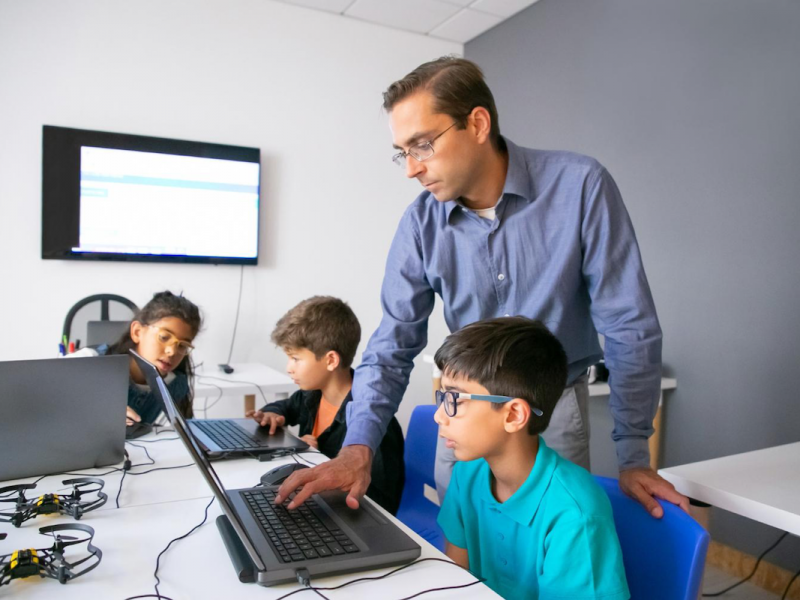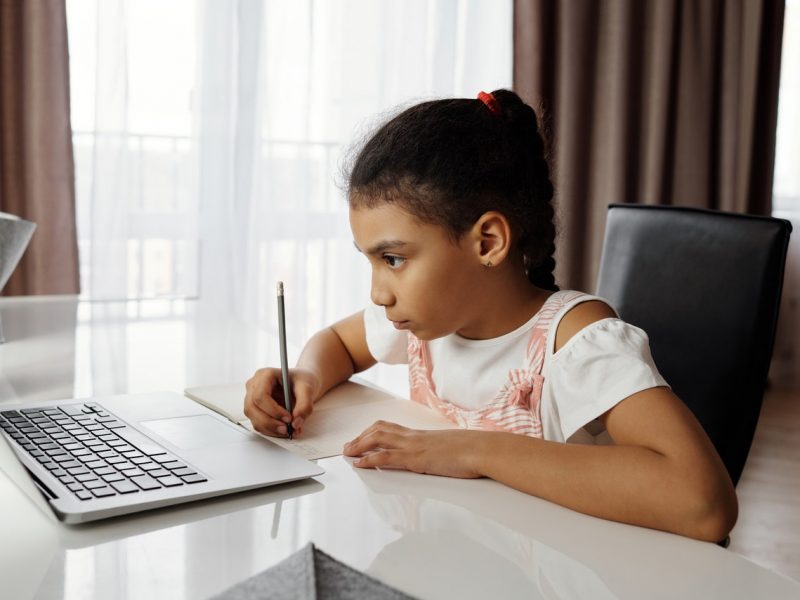Schools are social setups and the ruboff effect of social interaction with peers & teachers has been the cornerstone of school education. Covid-19 has jolted that foundation for good.
From noisy classrooms and active lunch breaks, group learning activities in laboratories to extra-curriculars in the form of art or sport, schools have been synonomous with a bustling student-teacher activity. However, the pandemic has brought this life to a halt, as schools were forced to shut down as children’s safety became a risk, given their high susceptibility to disease and weaker immunity.
However, education could not be stopped. Schools have gone virtual as a response. Teachers & Children have gone online. Interaction is now limited to virtual classrooms and at best individual calls and chats. Children are boxed at home with limited or no physical activities while their screen time has hit the roof. Given the situation, it would be fair to guess that physical schools will not be reopening (at-least) till Dec 2020. And if schools do open this academic year, enforcing social distancing, ensuring student safety, managing parent emotions and managing logistics would be a great challenge for the school authorities.
School revenues have been badly hit (by at least 50 per cent, according to data collected by School Diary for K12 schools and upto 90 per cent for pre-schools) thus schools may be forced to be operational again.
But operating in the post COVID-19 era will be drastically different, and schools will have to come to terms with the new normal. Here are some of the major changes, challenges and disruptions that will need to be considered if schools do decide to become operational for this academic year:
Getting children accustomed to the new normal
The first challenge that school authorities (& parents) have to deal with is shocked children. School has been a place to share time with friends, hugging, patting & poking at them for small joys, sharing lunch boxes and stationaries. Children, who are conditioned to value camaderie, will definitely be in a shock and even fear, to see only 20-30 per cent of the class present for the day. Also, Imagine the child’s frustation in the new normal where touching, hugging, sharing of stuff or even whispering secrets will be completely forbidden, even though they would be meeting some of the friends after a huge gap.
Paranoid parents
All said and done, parents would be very concerned and anxious about their kids resuming school. Especially if they are working from home themselves and/or have support at home. Parents would demand hard assurances before they feel comfortable in allowing their kids to enter school again. They would also demand a constant update on the precautions and measures the school will be taking to ensure maximum social distancing and other safety precautions like masks and sheilds etc., are taken by the school staff and enforced upon students.
Unpleasant and uncomforable attire
To add to their woes, children will be expected to sit in their cosmic suits with masks/faceshields on, sweating underneath, while constantly rubbing hands with sanitiser. Not to mention the teachers and staff who will have to match the protocols here. Expecting a kid to transition into this methodical maniac version of themselves would require constant training at home and lot of persistence and supervision.
Overwhelmed Logistics
Schools may have to operate in shifts with a combination of in-school and online classes. All departments, including teachers, transport, housekeeping, admin and other staff will be stretched beyond their limits. Classes may end up getting divided into small batches. For example, a class of thirty may see students coming in three batches of ten each. If that happens, teachers may have to work double the time, teaching more in-class sessions, given the same class size.
Transport to school will be a nightmare with multiple rounds of transporation happening to ferry students in batches. Housekeeping staff have to ensure constant sanitisation and cleaning of school/class premises round the clock. Queries of concerned parents will shoot up for admin staff as they manage internal logistics for school operations.
Teacher attrition
Teachers’ attrition may shoot up as many teachers, who can, would avoid physical interactions at school. And if the school authorities insist on classroom delivery, many teachers may find quitting easier than risking the contagion in this fragile situation. The increase in the workload – with double shifts and smaller batches, plus managing an uncomfortable, shocked and frusted set of students, can further add to the woes of the teachers, who may be more inclined to quit.
Cashflow issues
With parents, and their finances, under stress, school fee collections have already been hit. Many parents are demanding fee discounts/waivers or easy installments. A lot of families have moved to their hometowns and may not immediately return. Schools that just rely on cash/cheque collection in school would struggle to collect payments.
Every school has to cover for all these bases, and may be more, before they think of opening the doors and have to adjust to the fact that normalizing education in school is going to be a long haul rather than a quick recovery.
(The author is founder of School Diary . This article was first published in ”The Tribune” on Aug 24,2020)


